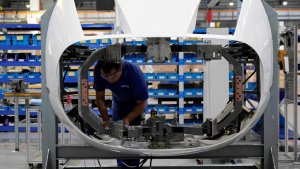Why is demand for British goods growing so rapidly in Asia – and how can you successfully break into the market?
Take Advantage Of Growing Demand For UK Goods In Asia
Why is demand for British goods growing so rapidly in Asia – and how can you successfully break into the market?

New figures released last month by the Office for National Statistics show that the fastest-growing export markets for the UK are in Asia.
UK business has seen remarkable growth in exporting figures to the region – with a whopping 40% growth in exports to Taiwan, 19% to India, one of the world’s fastest growing economies, and 17% to Thailand.
So why is it that British goods are proving to be in such high demand in Asia right now – and how can UK businesses get in on the action?
Growing prosperity
It’s firstly important to note Asia’s increasing economic prosperity. Five of the world’s fastest growing economies are in Asia and, according to the United Nations Conference on Trade and Development, by 2020 Asian economies will be bigger than the combined total of the rest of the world’s economies.
It’s predicted that, by 2030, Asia’s share of global GDP is on course to reach 35%. This is currently equivalent to the share of the Eurozone and the USA combined.
Changes in purchasing habits
Asia’s population has an increasingly disposable income and consumption is rising as a whole. The demand for products and brands is at an all-time high and this is set to continue for the foreseeable future. Health-care spending alone is expected to exceed $3.5 trillion by 2020. Collectively, Asia represents 60% of the total buying power of the world.
Emerging middle and upper classes
Asia’s population is booming and salaries are increasing, meaning there is a rising middle class – the fastest growing in the world. The highest number of billionaires and millionaires on any continent are also located in Asia.
In Asia’s developing countries, the higher middle class and HNI families lead the market trends but the emerging and growing middle class is the major force of buying power in those market for the present and the near future.
Attraction to British products
In the mindset of Asia’s rapidly-expanding middle classes, British goods are associated with quality and exclusivity and are ‘hand-made’ by companies with long histories.
Many Asian countries have historical links to the British Empire. The uniqueness and lineage of British products are therefore deeply rooted in people’s hearts. The rich history of Britain gives the brands a powerful story to tell, which makes them more meanigful to the consumer.
Research by Barclays Corporate Banking revealed that 64% of consumers in India, 57% in China and 48% in the UAE were prepared to pay more for UK-made goods because they perceive the quality to be higher. The research also showed that this trend is even stronger amongst younger generations.
Almost half (48%) of under 55s surveyed said a product showing the Union Jack increased their likelihood of purchasing a product, compared to a quarter (24%) of over 55s. In China, this was as high as 73% in 25-34 year olds.
How can UK businesses successfully break into the market?
There’s massive potential for luxury and British-branded goods to become major global brands via exporting to Asia. Every successful product needs a good back story that will sell in Asia, whether it’s about the product being hand-made, the maker’s long-standing heritage or its exclusivity.
There are a huge number of opportunities for British businesses in Asia – from healthcare products to food to tech. Be very clear about where in Asia there is a market for your product.
Heavy industrial products are valued across emerging markets in Asia like India, China, Thailand and Cambodia, where huge infrastructure construction is needed and where the country’s own heavy industry manufacturing is relatively weak.
Energy products, ranging from traditional fossil industry to all types of renewable energy equipment, are very competitive in ASEAN countries. Luxury goods – from fashion to food – are, as ever, popular in GCC countries and Japan and Singapore.
The demand for convenient, well-packed food products has spiked in recent years. The appetite for traditional UK beverages like whisky and gin has reached a whole new level in countries like China and India.
Governments are also aiming to shift 60% of Asia’s population to urban areas by 2025. This provides unrivalled opportunities in urban infrastructure – with a continued need for both trade and investment.
The governments have also signalled that foreign investment will have a significant role to play in this process.
Breaking into the market is not as simple as finding one or two distributors. It’s essential to build a real understanding of the market and the culture and have the right product and local partners for the business.
Siddharth Shankar is a leading expert in trading with Asia and CEO of Tails Trading, an innovative new solution helping UK SMEs to export their goods to Asia. Visit www.tailstrading.com to find out more.
Thanks for signing up to Minutehack alerts.
Brilliant editorials heading your way soon.
Okay, Thanks!

